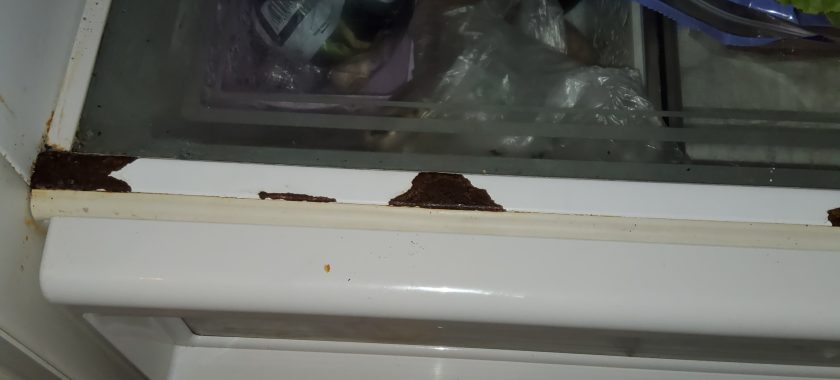A refrigerator leak is one of those issues that catches homeowners by surprise. You open the door expecting to grab a cold drink, but instead you find water pooling on the top shelf, dripping down the interior walls, or collecting in small puddles near the crisper drawers. This problem is more common than many people realize, and while it may seem minor at first, it can quickly escalate into mold growth, food spoilage, or damage to internal components. Understanding why your refrigerator is leaking from the top shelf is the first step toward restoring its safe, efficient operation.
One of the primary causes of water leaks on the top shelf is a blocked defrost channel. Modern refrigerators automatically defrost to prevent ice buildup on the evaporator coils. During each defrost cycle, the melted frost drains through a dedicated channel and flows into a drip pan located at the bottom of the appliance. When that channel becomes clogged with debris, food particles, or ice, the water has nowhere to go. Instead, it backs up into the refrigerator compartment, often emerging at the highest point — the top shelf.
A blocked defrost channel typically develops gradually. For example, small food particles or crumbs may be accidentally pushed into the drainage hole over time. In other cases, ice can accumulate if the internal temperature fluctuates or if the door is frequently opened, causing excessive moisture and humidity inside the appliance. As the obstruction worsens, water is forced to overflow into the interior rather than draining efficiently. Homeowners often first notice this problem as droplets on the top shelf or as a steady trickle appearing near the back wall.
Another significant cause of leaks from the top shelf is a cracked internal liner. The liner is the smooth plastic surface that forms the interior walls of your refrigerator. While durable, it can still develop cracks due to age-related wear, accidental impacts, or manufacturing defects. Even a small crack is enough to disrupt the insulation and allow condensation to accumulate behind the liner. Eventually, this moisture finds its way back into the refrigerator compartment, typically emerging near the top shelf where temperature differences are most noticeable.
Cracked internal liners create more complex repair challenges because moisture behind the walls can lead to mold growth, insulation damage, and structural weakening. If left unaddressed, the refrigerator may begin to lose its cooling efficiency, forcing the compressor to work harder and increasing energy consumption. In extreme cases, the appliance may no longer be able to maintain safe temperatures for food storage.
Regardless of whether the issue is a blocked defrost channel or a cracked liner, water leaks inside a refrigerator should never be ignored. The presence of moisture inside the compartment creates an ideal environment for bacteria and mold. Even sealed food containers can become contaminated if kept in a damp environment for too long. Additionally, standing water can damage shelves, drawers, and electronic sensors, leading to further malfunctions.
To diagnose the source of the leak, a technician will typically begin by inspecting the drainage hole. If it is blocked, they may flush it using hot water or specialized tools to clear any ice or debris. Next, they verify that the defrost system is functioning correctly, ensuring that the thermostat, heater, and timer are all working as intended. If any of these components fail, the system may produce excess water, overwhelming the drainage channel even if it is clear.
A cracked internal liner requires a more advanced approach. Depending on the extent of the damage, a technician may seal the crack using specialized materials designed for food-safe environments. In other cases, deeper structural repairs may be needed to restore proper insulation and prevent further moisture accumulation. Because every refrigerator model is different, only a professional can determine the safest and most effective repair method.
Preventing these issues in the future requires a combination of proper maintenance and careful usage. Regular cleaning is essential. Wipe down the interior of your refrigerator and avoid pushing food containers tightly against the back wall, where they could potentially block air vents or drainage areas. Monitor your refrigerator’s temperature settings and ensure the door gaskets provide a tight seal. A refrigerator that runs too warm or too cold is more likely to develop frost buildup, which contributes to drainage problems.
If you notice condensation, water droplets, or small puddles on your top shelf, do not wait for the problem to worsen. What may seem like a harmless nuisance could quickly lead to major internal damage, reduced cooling performance, or costly food waste. Professional diagnosis and repair ensure your refrigerator continues to run efficiently and safely.
For reliable and fast refrigerator repair in your area, contact Chula Vista Appliance Repair Company. Our experienced technicians can identify the cause of the leak, restore proper function, and help prevent future damage. Schedule your service today and protect your appliance before minor issues turn into major problems.
Contact us
(619) 880-5508


